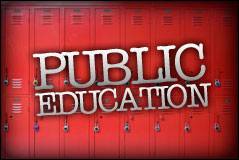Media
7 Education Facts Unions Don’t Want You to Know!
 Pennsylvania is reeling from the Friday release of student test scores for 2011-12, which show declining student performance in our public schools. Kids did worse on the Pennsylvania System of School Assessments, or PSSAs, the test most widely used to track student progress and measure if the state is meeting goals set by the federal No Child Left Behind law.
Pennsylvania is reeling from the Friday release of student test scores for 2011-12, which show declining student performance in our public schools. Kids did worse on the Pennsylvania System of School Assessments, or PSSAs, the test most widely used to track student progress and measure if the state is meeting goals set by the federal No Child Left Behind law.
The results are disheartening: Overall, 1 in 4 Pennsylvania students are not proficient in math, while nearly 3 in 10 cannot read at grade level. As for the state’s 500 school districts, just about 60 percent made “Adequate Yearly Progress” (compared to more than 90 percent last year).
Nor do the results stop at mediocrity—this year, a cheating scandal involving educators marred Pennsylvania’s schools. Some 100 educators are in the dock for tampering with students’ test responses, which inflated performance in certain districts. The state Department of Education argues the latest test results show Pennsylvania’s real state of learning.
Unsurprisingly, school administrators and teachers’ union heads are slathering the blame on their usual scapegoat: supposed funding cuts. One superintendent complained his and other school districts are at “bare bones.” Michael Crossey, the president of the Pennsylvania State Education Association, or PSEA, fumed:
Who really thinks state government can cut nearly $1 billion from the public schools, cut 14,000 educators, and eliminate programs that work for students—without impacting student achievement?
On the contrary, Mr. Crossey believes practicing the same failed policy in education—more money and more time—will suddenly yield schools full of scholars. Here are seven facts on education funding to demonstrate money is not to blame for lower test scores:
- That $1 billion cut was always coming, and school districts knew this, because education spending increases came as a result of temporary federal stimulus funding.
- We’ve seen mediocre results despite a doubling in overall K-12 education spending in the last 15 years, from 1996 to 2011. Pennsylvania now spends nearly $15,000 per student on average. By contrast, our performance on the National Assessment of Educational Progress (NAEP) test, which is both a harder test than the PSSA, and allows us to compare performance with other states, shows only about 40 percent of 4th and 8th-graders are proficient in reading and math with scores unchanged for nearly 10 years.
- Increased spending does not guarantee better academic results. A 2010 study from the 21st Century Partnership for Science, Technology, Engineering, and Mathematics Education (21PSTEM) looked at 30 Pennsylvania school districts that improved the most on 11th grade reading and math performance and the 30 districts that declined the most from 2004 to 2010. Schools that declined in performance had higher increases in total per-student spending.
- Pennsylvania’s average composite SAT score in reading and math has hovered around 995 for the last 15 years, despite doubling spending.
- School districts have been increasing spending for several years that don’t really match student needs. For example, staffing increased by about 35,000 employees over 10 years, while student enrollment declined about the same amount.
- School districts had more than $3 billion in reserve funds as of 2011, which represents a tripling in 14 years. That is, they’ve been able to save large portions of their allotted education funds, despite increases in spending and claims of education funding cuts.
- Union labor practices and contracts make adjustments during recessions extremely difficult. Because school districts are contractually obligated to meet a certain level of salaries and benefits, the only way to cope with school district budget deficits is frequently to lay off teachers and other school employees, rather than come up with solutions such as higher employee contributions to health care costs.
In the end, poor test scores, cheating and sloppy spending serve a failed education system instead of children. Kids who never learn to read and do math properly can’t get decent jobs. That’s the real, and frightening, result of poor PSSAs.